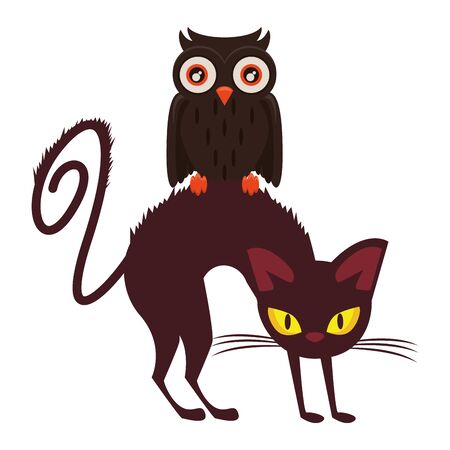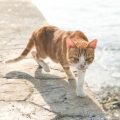1. Understanding Your Cat’s Dietary Needs
Caring for your cat’s health begins with understanding its unique dietary requirements. Cats are obligate carnivores, meaning their bodies are designed to thrive on animal-based proteins and specific nutrients found only in meat. However, how much you should feed your cat depends on several factors that are unique to each feline friend. Let’s explore how age, weight, breed, and lifestyle all play a crucial role in determining the right portion size for your pet at home in the UK.
Key Factors Influencing Daily Food Intake
| Factor | Description | Impact on Diet |
|---|---|---|
| Age | Kittens, adults, and senior cats have different energy and nutrient needs. | Kittens require more calories and protein; older cats may need fewer calories and more fibre. |
| Weight | A healthy body weight ensures optimal wellbeing. | Overweight cats need controlled portions; underweight cats may require calorie-dense diets. |
| Breed | Some breeds are naturally larger or more active than others. | Larger or high-energy breeds may need increased food intake compared to smaller or less active breeds. |
| Lifestyle | Indoor vs outdoor activity levels affect caloric requirements. | Outdoor or highly active cats burn more calories than indoor, sedentary pets. |
The British Home Environment
In typical British households, many cats live primarily indoors with access to gardens or outdoor spaces. This mixed lifestyle can make portion control challenging, as activity levels vary. Monitoring these factors helps ensure your cat gets the right amount of nutrients without overfeeding—a key part of preventing obesity and related health issues common in UK pets.
Choosing the Right Cat Food in the UK
When it comes to feeding your cat the correct amount, choosing the right type of food is just as important as portion control. In Britain, pet owners have a wide range of commercial cat foods to choose from, including both wet and dry options. Each type has its own benefits and potential drawbacks, and understanding British pet food labels can help you make an informed decision for your feline friend.
An Overview of Wet and Dry Cat Foods Available in Britain
| Type | Key Features | Common Brands in the UK | Pros | Cons |
|---|---|---|---|---|
| Wet Food | High moisture content, usually sold in tins or pouches | Whiskas, Felix, Sheba, Gourmet | Easier hydration, often more palatable for cats | Shorter shelf life once opened, can be costlier per serving |
| Dry Food (Kibble) | Low moisture content, available in bags | Royal Canin, Iams, James Wellbeloved, Purina One | Convenient to store, helps dental health by reducing plaque | Cats may drink less water; risk of overfeeding due to calorie density |
What to Look for on British Pet Food Labels
The Pet Food Manufacturers’ Association (PFMA) sets standards for labelling in the UK. Look for the following when selecting cat food:
- Complete vs. Complementary: “Complete” foods meet all daily nutritional requirements; “complementary” foods should only be fed alongside other foods.
- Ingredients List: Ingredients are listed by weight; look for high-quality animal protein sources at the top.
- Nutritional Analysis: Shows percentages of protein, fat, fibre, and moisture—key indicators of quality.
- Life Stage Suitability: Ensure the food is appropriate for your cat’s age (kitten, adult, senior).
- Feeding Guidelines: Most packs include recommended portion sizes based on your cat’s weight.
Advice from UK Vets on Choosing Cat Food
British veterinarians recommend feeding a diet that suits your cat’s individual health needs and lifestyle. Some cats benefit from mixed feeding—a combination of wet and dry food—to encourage hydration while providing dental benefits. If your cat has specific health conditions such as kidney disease or obesity, consult your local vet for tailored dietary advice. Above all, always transition gradually when changing foods to avoid digestive upset.

3. How to Work Out the Perfect Portion Size
Getting your cat’s portion size right is crucial for their health and wellbeing. Overfeeding can lead to obesity, while underfeeding may result in nutritional deficiencies. Here’s a step-by-step guide tailored for British cat owners to help you calculate the ideal daily food amount for your feline friend.
Step 1: Check Feeding Guidelines on Packaging
Most commercial cat foods sold in the UK provide recommended feeding amounts based on your cat’s weight. Always start by reading these instructions on the packet or tin, but remember these are general guidelines and may need adjusting depending on your cat’s lifestyle and health.
Step 2: Weigh Your Cat Accurately
Use a reliable set of kitchen or pet scales to weigh your cat regularly. Knowing their exact weight helps you match feeding recommendations more precisely. If you’re unsure how to weigh your cat at home, ask your local vet nurse for a demonstration.
Step 3: Assess Your Cat’s Body Condition
The ideal portion size also depends on whether your cat is underweight, overweight or just right. Use the Body Condition Score (BCS), a system widely used across the UK:
| BCS Score | Description |
|---|---|
| 1-3 | Underweight |
| 4-5 | Ideal Weight |
| 6-9 | Overweight/Obese |
If in doubt, consult with your vet for a BCS check during your next appointment.
Step 4: Calculate Daily Caloric Needs
Your vet can provide a tailored recommendation, but as a general rule, an adult indoor cat weighing around 4kg usually needs approximately 200–220 kcal per day. Outdoor or highly active cats may require more.
Example Calculation Table:
| Cat Weight (kg) | Kcal/Day (Indoor) |
|---|---|
| 2 | 100–120 |
| 3 | 150–180 |
| 4 | 200–220 |
| 5 | 250–270 |
Step 5: Adjust for Special Circumstances
Kittens, senior cats, pregnant or lactating queens, and cats with medical conditions all have different nutritional needs. Always seek advice from your local veterinary surgery in these cases.
Step 6: Monitor and Tweak Portions Regularly
Cats’ needs change over time. Weigh your cat monthly, observe their body shape, and adjust portions accordingly. If you’re ever unsure, book a nutritional consultation with your vet or a qualified pet nutritionist in the UK.
4. Maintaining a Healthy Feeding Routine
Establishing a regular and healthy feeding routine is essential for your cat’s well-being, especially in British homes where daily schedules can vary and indoor living is common. Consistency helps to regulate your cats metabolism, reduce the risk of obesity, and prevent begging behaviour. Here are practical tips tailored to British lifestyles:
Tips for Establishing Regular Mealtimes
- Set Meal Times: Aim to feed your cat at the same times each day—morning and evening are ideal for most UK households.
- Use Portion Control: Use a kitchen scale or measuring cup to ensure each meal matches the recommended portion size on your cat food packaging.
- Avoid Free-Feeding: Leaving food out all day can encourage overeating, particularly in indoor cats.
- Separate Feeding Areas: In multi-cat households, feed each cat separately to monitor individual intake and prevent competition.
The Importance of Monitoring Your Cat’s Weight and Condition
Cats living indoors in Britain may be less active, making it important to keep an eye on their weight. Weigh your cat monthly using bathroom scales (step on with and without your cat to calculate the difference), and check their body condition regularly using this simple guide:
| Body Condition | Description | Action Needed |
|---|---|---|
| Underweight | Ribs easily felt, visible spine/hip bones, little fat cover | Increase portion size or consult your vet |
| Ideal Weight | Ribs felt with slight fat cover, visible waist from above | Maintain current feeding routine |
| Overweight | Difficult to feel ribs, rounded abdomen, no waist visible | Reduce portions, increase playtime, consult your vet if needed |
British Home-Specific Advice
- If you use automatic feeders due to irregular work hours or commutes, set them for consistent times and check they dispense accurate amounts.
- Dishes should be placed away from noisy appliances like washing machines or busy kitchen areas for a calm eating environment.
- If you offer treats such as Dreamies or other British favourites, count these within the daily calorie allowance.
- Encourage gentle activity indoors by rotating toys or using puzzle feeders—particularly useful during wet British weather!
Summary Tip:
By creating a predictable feeding schedule and monitoring your cat’s weight and body condition, you’ll support their long-term health and happiness in any British home setting.
5. Dealing with Common Feeding Challenges
British cat owners often encounter a few familiar hurdles when it comes to portion control and feeding routines. Fussy eaters, overfeeding, and the question of how to give treats without disrupting a balanced diet are all common issues in UK homes. Here’s some practical advice and real-life examples from British households to help you manage these challenges effectively.
Fussy Eating Habits
Cats can be notoriously choosy about their food, especially if they become accustomed to one flavour or texture. If your cat is turning its nose up at meals, try gradually introducing new foods by mixing small amounts into their usual portion. In homes across Manchester and London, owners have found success with slow transitions over several weeks, using high-quality wet or dry foods approved by UK pet nutrition standards. Ensuring the food is served at room temperature can also help, as this enhances aroma and palatability.
Avoiding Overfeeding
Overfeeding is a common concern in British households, especially with indoor cats who may not burn as many calories. The table below offers a general guideline based on an average adult cat’s weight, but always check the packaging for specific instructions and adjust according to your vet’s advice.
| Cat Weight (kg) | Daily Food Amount (g) – Dry | Daily Food Amount (g) – Wet |
|---|---|---|
| 3-4 | 35-50 | 170-220 |
| 4-5 | 45-60 | 200-260 |
Owners in Bristol report that using digital kitchen scales ensures accurate portions and helps prevent accidental overfeeding. Consistent feeding times—such as breakfast and tea—also create healthy routines reminiscent of traditional British mealtimes.
Treats: A Balanced Approach
Treats can be a wonderful way to bond with your cat, but moderation is key. In Yorkshire households, many owners limit treats to 10% of their cat’s daily calorie intake, choosing low-calorie options like freeze-dried chicken or dental chews approved by UK vets. It’s best to use treats as rewards for positive behaviours or during playtime rather than as part of regular meals.
Practical Example from a British Home
The Smith family in Surrey resolved their tabby’s fussy eating by offering new foods alongside her favourite ones and limiting treats to just two per day. Meanwhile, the Browns in Edinburgh reduced overfeeding by switching to measured portions and providing puzzle feeders to encourage activity and slow down eating.
Key Takeaways for British Cat Owners
- Transition new foods slowly and patiently.
- Weigh out food portions for accuracy.
- Limit treats and choose healthy options.
By applying these strategies rooted in local experience, you can ensure your cat enjoys a balanced diet while maintaining typical British household routines.
6. When to Consult Your Vet
While portion control and a balanced diet are essential for your cat’s health, sometimes changes in weight or behaviour may signal underlying health problems that need professional attention. Recognising these signs early can make a significant difference in your cat’s wellbeing. In the UK, it’s always best to err on the side of caution and seek veterinary advice if you have concerns.
Signs Your Cat May Need Veterinary Attention
| Health Indicator | What to Watch For |
|---|---|
| Weight Changes | Sudden weight gain or loss, even with no change in feeding routine |
| Appetite | Loss of appetite or excessive hunger |
| Behaviour | Lethargy, hiding more than usual, irritability, or reduced interest in play |
| Grooming Habits | Neglecting grooming or excessive grooming resulting in bald patches |
| Litter Tray Habits | Changes in frequency, consistency, or presence of blood in urine/faeces |
| Mobility | Limping, stiffness, or reluctance to jump/climb |
| Breathing & Vocalisation | Panting, wheezing, persistent coughing, or unusual meowing |
When Should You Contact Your Vet?
If you notice any of the above signs persisting for more than a couple of days, or if your cat seems distressed or unwell, it’s time to reach out to your local vet. In the UK, many practices offer telephone consultations for initial advice. Don’t hesitate to use NHS 111 for pets (available in some regions), or consult the Royal College of Veterinary Surgeons’ Find a Vet tool to locate a trusted practice near you.
Routine Check-Ups Are Key
Even if your cat seems healthy, regular check-ups are vital. Annual health checks and vaccinations can catch potential issues early. Discuss your cat’s diet and portion sizes at each visit—your vet can help you tailor recommendations based on age, breed, and activity level common in British homes.
Your Cat’s Health Is a Team Effort
You know your pet best. If something doesn’t feel right, trust your instincts and speak to your vet. By combining vigilant home care with professional guidance, you’ll ensure your feline friend enjoys a happy and healthy life throughout the UK.


